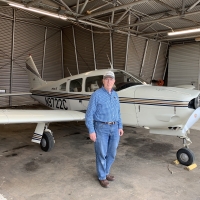Failure of Auxiliary Vacuum
Lost my primary vacuum pump while in flight. Switched to auxiliary vacuum. Worked for a while then also quit. Returned home safely. Called my A&P and found out the auxiliary vacuum does not work when operating at max power. This was confirmed during my flight because it failed during the climb and started working again when I reduced power for the decent. Does anyone know why the auxiliary vacuum does not work when using max power? Is it to protect the instruments when vacuum is too high? Thanks!


Comments
Hi Rocky, the aux vacuum basically T's into your intake manifold. When MP pressure is close to atmospheric (high power settings) there is not enough differential pressure to power the instruments and they will spin down. Probably would require a low cruise speed or descent to keep a couple instruments going.
If you don't have boots or a complex AP integration I would consider chucking the whole thing. You will save plenty of weight removing pumps, hoses, valves, etc and gain new functionality with electronic instruments the the Garmin D5, etc.
Eric Panning
1981 Seneca III
Hillsboro, OR (KHIO)
It especially won't work with a turbo. Removed mine a long time ago and replaced it with an auxiliary vacuum pump run by an electric motor. (this was before all the glass instruments that are available today) Any avionics upgrade that I do from here on out will include disposing of the entire vacuum system.
Lon Stratton
n7xa.com
The engine side vac hoses near the exhaust take a beating. Even squeezing them can send a cascade of particles into the pump on next operation. The reason is all the other hoses are fluid hoses and the oil, fuel, etc helps take away heat. The vac hoses have nothing to conduct heat away and will bake next to the exhaust. A radiant barrier is a good idea as well as replacing them more frequently.
Eric Panning
1981 Seneca III
Hillsboro, OR (KHIO)